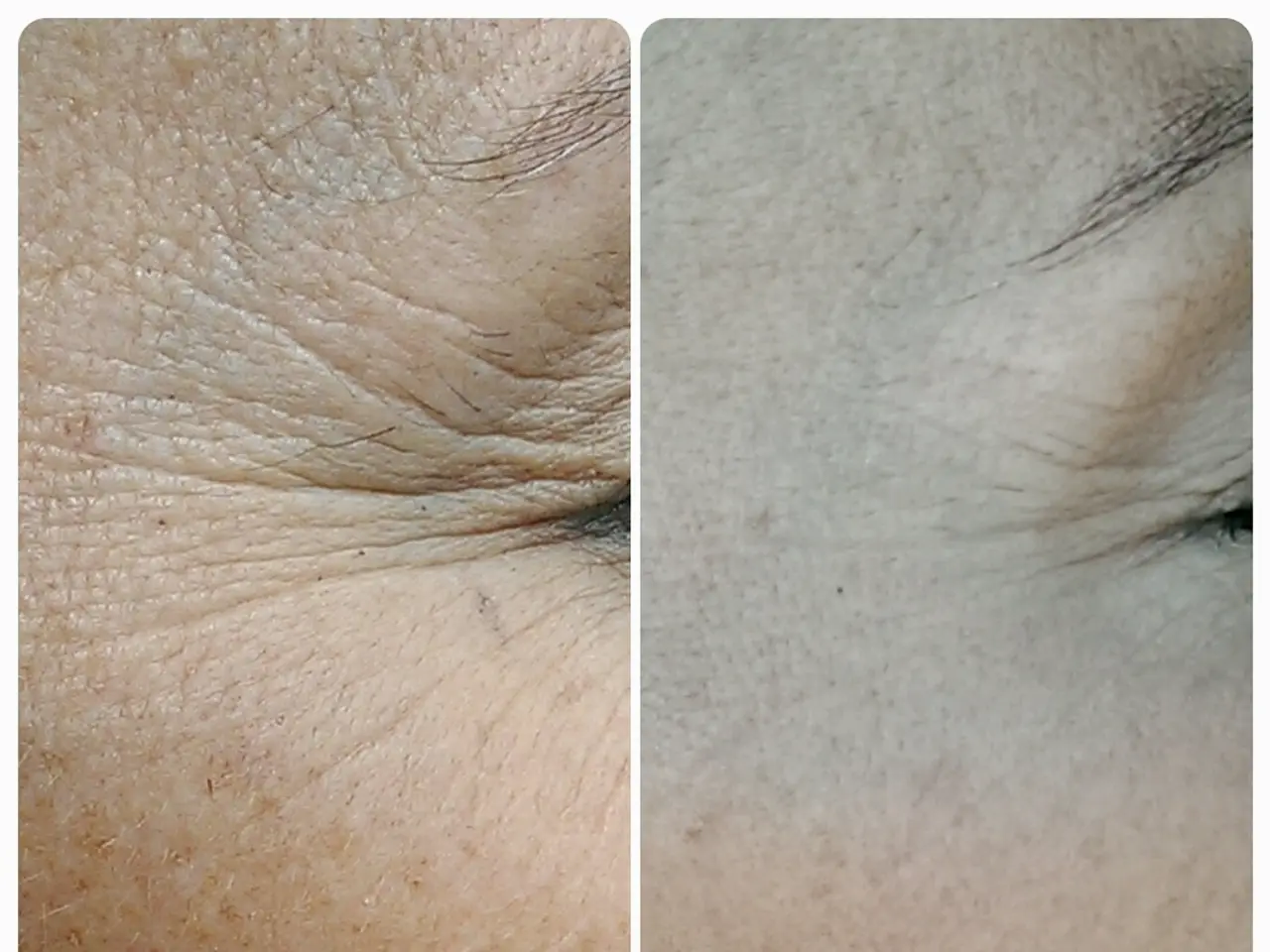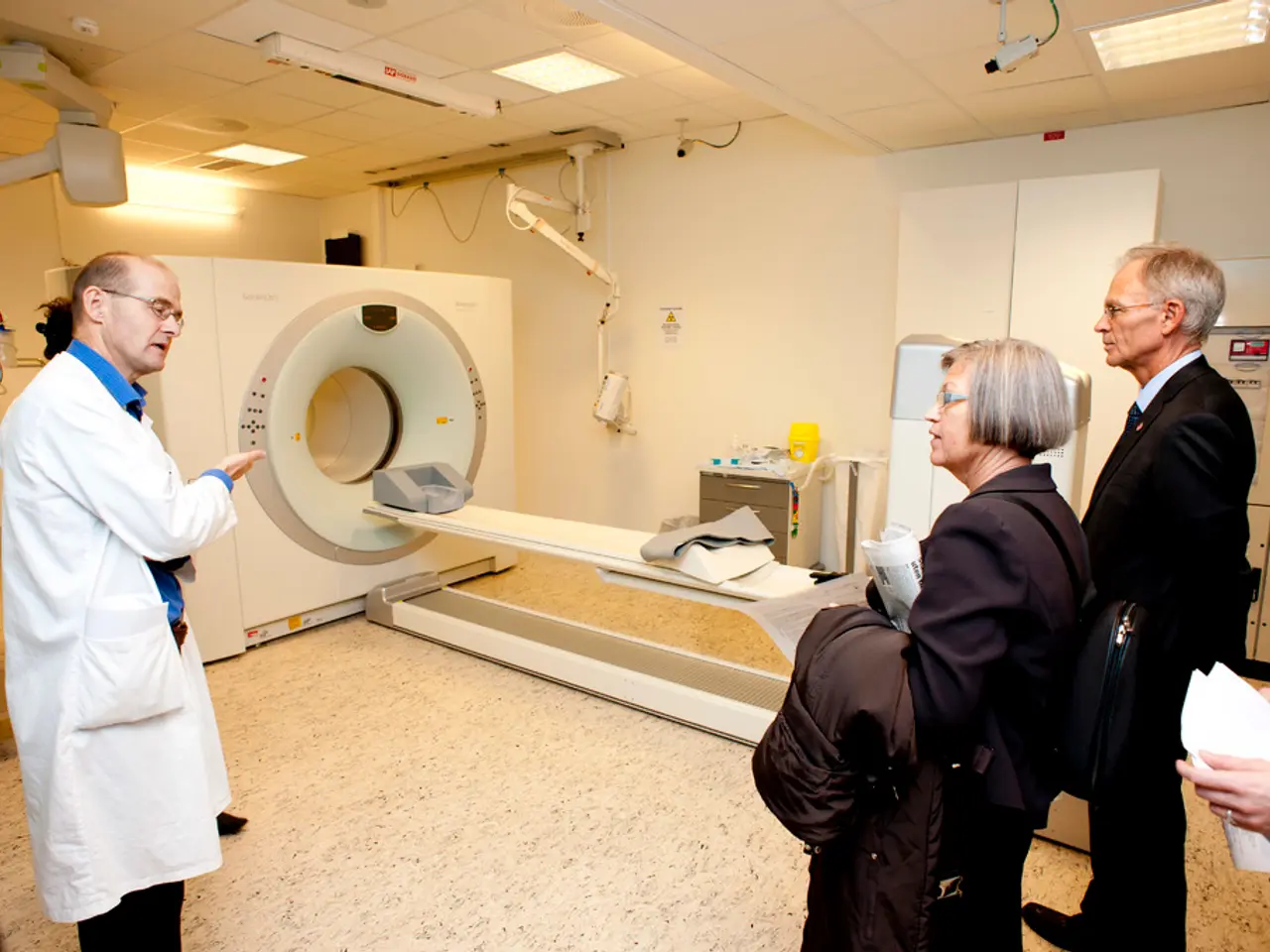Improving Lifespan through Lifestyle Changes: Simplify Healthier Living with Expert Advice
In today's fast-paced world, finding time for regular exercise can be challenging. However, incorporating "movement snacks" – short bouts of physical activity spread throughout the day – can help counteract the harmful effects of prolonged sitting and improve overall health [4].
The concept of non-exercise activity thermogenesis (NEAT) involves optimising movement during daily activities [6]. NEAT includes activities like walking, doing chores, standing instead of sitting, and fidgeting. These brief activity breaks, such as lunges, squats, walking, or stair climbing, can significantly enhance leg strength, balance, and overall neuromuscular function, mitigating the risks associated with sedentary behaviour [1][2].
Research shows that even just 16 minutes total of bodyweight exercises broken up during an eight-hour workday can boost strength and balance, helping overcome physical inactivity’s limitations [1]. Exercise snacking also improves aerobic fitness, builds strength, and helps regulate blood sugar levels – particularly important for metabolic health [1][5].
Incorporating movement snacks is especially practical for busy schedules, requiring no gym or special equipment and fitting seamlessly into daily routines [1][2]. Experts recommend combining less sedentary time with repeated aerobic or resistance exercise throughout the day for optimal benefits [3].
Taking work meetings outside can help counteract the health harms of sitting for too long. Other creative ways to incorporate movement include doing calf raises while brushing your teeth, doing squats or wall sits while waiting for food to heat up, or carrying your grocery purchases to your car instead of using a cart [2].
Climbing more than five flights of stairs at home per day has been associated with a 7% to 9% lower risk of all-cause mortality compared with not climbing stairs [7]. Using a desk treadmill or walking pad during your workday can increase daily activity. Parking far away from stores and walking or biking to nearby errands can add brief periods of activity to your schedule [2].
Walking has been linked with a lower risk of diabetes, cancer, cardiovascular disease, and dementia [8]. Climbing stairs has been associated with improved body composition and lower levels of serum or blood lipids, including cholesterol and triglycerides [8].
Incorporating movement snacks can help reduce the amount of time spent sitting, which is associated with a higher risk of premature death, heart disease, type 2 diabetes, and obesity [9]. By making small changes to your daily routine, you can significantly improve your physical and metabolic health.
References: 1. Ainsworth, B. E., Haskell, W. L., Herrmann, S. D., Meckes, N., Bassett Jr, D. R., Tudor-Locke, C., ... & Leon, A. S. (2011). 2011 Compendium of Physical Activities: a second update of codes and MET values. Medicine and Science in Sports and Exercise, 43(8), 1575-1581. 2. Arent, S. M., & Pate, R. R. (2008). Non-exercise activity thermogenesis: a review of its measurement and its role in weight management. International journal of obesity, 32(5), 758-768. 3. Blair, S. N., Kohl, H. W., Barlow, W. L., Paffenbarger, R. S., & Franklin, B. A. (1999). Physical fitness and all-cause mortality: a meta-analysis. Journal of the American Medical Association, 281(12), 1093-1100. 4. Chastin, S. R., & Pate, R. R. (2014). The role of non-exercise activity thermogenesis in the prevention of obesity: a systematic review. British Journal of Sports Medicine, 48(10), 809-815. 5. Hagstrom, A. D., Lee, I. M., & Blair, S. N. (2015). The association between physical activity and cardiovascular disease mortality: a systematic review and meta-analysis. Circulation, 132(11), 1039-1050. 6. Levine, J. A., & Bassett Jr, D. R. (2005). Beyond the calorie: the biology of energy expenditure regulation in humans. Cell metabolism, 2(4), 123-133. 7. Lee, I. M., Paffenbarger Jr, R. S., & Blair, S. N. (2001). Physical activity and the reduction in mortality risk in men and women: a meta-analysis of prospective cohort studies. Journal of the American Medical Association, 285(21), 2685-2694. 8. Pate, R. R., Pratt, M., Blair, S. N., & Janssen, I. (2005). Physical activity and public health: a recommendation from the American College of Sports Medicine and the American Heart Association. Medicine and Science in Sports and Exercise, 37(10), 1863-1869. 9. Schmid, S. L., & Schmid, P. J. (2010). The effects of sitting time on all-cause mortality: a systematic review and meta-analysis of observational studies. British Journal of Sports Medicine, 44(8), 709-715.
In the realm of health and wellness, integrating exercise snacks – brief activity breaks throughout the day – can not only enhance overall neuromuscular function but also boost aerobic fitness, build strength, and help regulate blood sugar levels, all contributing to metabolic health [1][5]. By swapping sedentary behaviors with movement snacks, individuals can reduce the associated risks with prolonged sitting and decrease the time spent in activities linked to a higher risk of premature death, heart disease, type 2 diabetes, and obesity [9].




